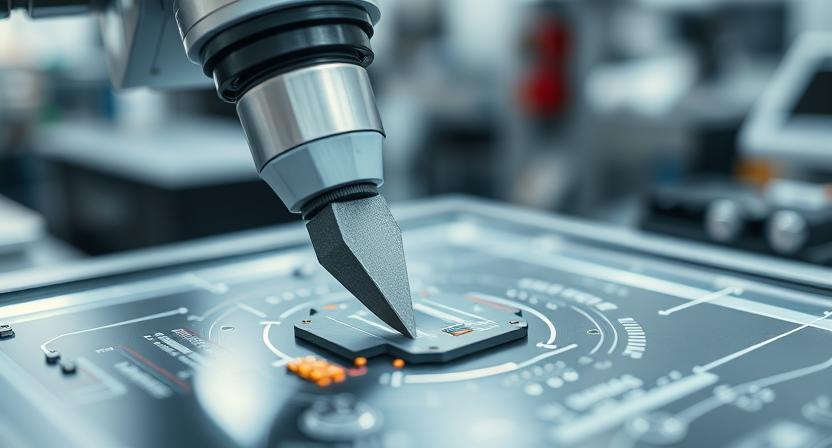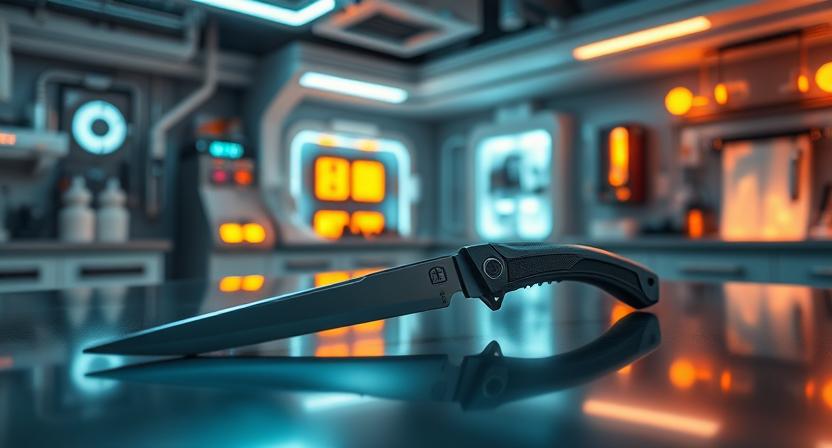The Evolution and Future of the Science Blade in Modern Innovation
Introduction: Understanding the Role of the Science Blade
Tools are essential for influencing results in the dynamic fields of research and technology. The science blade is one such instrument that is frequently disregarded but is essential to design, research, and sophisticated production. It is more than just a cutting tool; it is the result of the fusion of material science and precision engineering. The science blade pushes the limits of innovation through practical and experimental uses in engineering workshops, labs, and microfabrication processes.
This tool has gained recognition in fields that require exact precision due to its diverse range of applications. Engineers and researchers believe it is crucial when handling rare materials, delicate specimens, or state-of-the-art prototypes. The performance and versatility of the instruments, particularly the science blade, must keep up with the increasing specialisation of scientific processes.
Precision in Modern Laboratories with the Science Blade
Sterile conditions and excellent accuracy are required in laboratory settings. In this context, the science blade serves as a tool for sample preparation, microscopic material slicing, and handling delicate substances in addition to being a cutting tool. Numerous investigations, particularly those in chemistry and biotechnology, depend on the quality of these blades. Modern versions are extremely dependable in scientific research settings because of their coated materials, sharper edges, and anti-corrosive qualities.
The smallest mistake in specimen preparation might jeopardise an entire study in domains such as molecular biology. For this reason, science blades are frequently specially designed for specific laboratory uses. The demands on these blades, as well as the standards to which they are held, are stringent, ranging from slicing ultra-thin semiconductor wafers to cryosectioning frozen tissues.
Advanced Materials Used in Blade Science
What was once a straightforward cutting edge has been transformed into a sophisticated, optimised tool by advancements in blade technology. Scientists and engineers create blades that can operate in harsh environments using alloys, ceramics, and even nanostructures. These developments prolong lifespan, lessen friction, and keep blades sharp for a variety of applications. Energy-efficient designs and longer-lasting performance are made possible by advancements in blade technology that also take environmental issues into account.
To improve the qualities of scientific blades, manufacturers are already experimenting with diamond coatings, plasma treatments, and carbon nanotube reinforcements. These improvements make it possible for the blade to cut through organic tissues or hardened surfaces with similar ease. Science blades are therefore now essential in domains where conventional instruments are unable to satisfy the requirements for accuracy and productivity.
How Science Blades Contribute to Microfabrication
The production of small parts for sensors, medical equipment, and electronics depends on microfabrication. Because scientific blades are compatible with both soft and hard materials and have micro-level precision, they are used in this process. These techniques’ control enables the creation of extremely complex structures, like microchips and nanoscale components, which form the basis of contemporary gadgets like wearables, cellphones, and medical implants.
Ultra-sharp blades are used by engineers to preserve dimensional integrity and reduce damage to delicate constructions. For instance, a miscalibrated cut during integrated circuit production may cause component failure or conductivity loss. Each slice is clean, uniform, and free of minute flaws that could impair performance when using the proper scientific blade.

The Intersection of Technology and Science Blade Bodyboard Innovation
The science blade bodyboard concept is a new arena where recreational design and scientific cutting instruments combine. Precision science-inspired materials and design features are used in these boards. For improved control and performance in water sports, they combine flexible polymers, hydro-resistance, and aerodynamics. The term “science blade” in bodyboarding refers to the technological innovation required to create high-performance boards, even if it is not a blade in the conventional sense.
Sustainability and the Future of Blade Science
Blade science is not an exception to the way that environmental considerations have changed the design and use of tools. Energy-efficient production techniques, recyclable coatings, and sustainable materials are being prioritised by manufacturers. Biodegradable parts, intelligent feedback mechanisms, and AI-powered sharpening technology are the science blade’s future. Self-healing materials that could prolong these blades’ lifespan and usefulness without the need for human intervention are still being researched.
Applications of the Science Blade Across Industries
The science blade’s adaptability extends beyond the lab to many different industries. It is employed in aircraft to cut lightweight composite materials. Advanced blade science has produced surgical blades that guarantee less intrusive and more accurate procedures in medicine. Specially developed blades maximize slicing even in food preparation to maintain texture and nutrition. Every application has different needs, which drives ongoing innovation in the manufacturing and design of blades.
Smart Manufacturing and the Science Blade’s Role
Manufacturing now depends on automation, robotics, and real-time data processing due to the rise of Industry 4.0. These days, the science blade coordinates with computer-aided systems and robotic arms. Production line sensors can track the alignment, performance, and wear of blades, enabling prompt maintenance. Cutting activities in sectors like electronics, automotive, and biomedical engineering are made more efficient and consistent because to this integration.
The Growing Market for Custom Science Blades
Specialised solutions suited to particular problems are required by an increasing range of businesses. Custom scientific blades are therefore becoming more popular. To meet the needs of certain applications, these blades are designed with specialised materials, angles, and coatings. Blades used in tissue engineering, for example, need to be sterile and extremely precise, but strength and heat resistance are crucial in the production of glass. This demand for customisation is reflected in the market through both small-batch specialised fabrication and mass production.

How Education Drives Blade Science Forward
Universities and other institutions are essential to the advancement of blade science. Academic studies and research funding investigate novel composite materials, evaluate the performance of blades in several scenarios, and create instruments for particular tests. Student-led inventions frequently result in patents and partnerships with private businesses, demonstrating the critical role that university and education play in advancing the science blade field.
Challenges Facing Blade Science in the Next Decade
Despite progress, a number of obstacles still exist. These include preserving performance at nanoscale dimensions, cutting waste in the production of blades, and striking a balance between environmental friendliness and durability. Creating mechanisms to stop abuse or mishaps when using sharp instruments is another important concern. To preserve both innovation and user protection, laws and industry standards will need to change in tandem with the technology.
Why the Science Blade Remains a Critical Tool
It’s simple to overlook the significance of tangible instruments in a world where computers and software frequently take centre stage. However, the science blade is still crucial for innovation, industry, research, and healthcare. Its apparent simplicity belies the fact that every little element, from the coating to the blade’s angle, influences performance and results. This little yet powerful instrument keeps changing to meet the demands of contemporary science and technology.
Conclusion: A Future Shaped by Precision
The science blade’s voyage is far from finished. The blade continues to be a representation of accuracy, control, and advancement from labs to ocean waves, from industrial production lines to university research centres, and through inventions like the science blade bodyboard. The development and application of these instruments will progress along with automation, artificial intelligence, and material science. New issues will arise in the future, but the science blade is prepared to handle them thanks to ongoing development.

